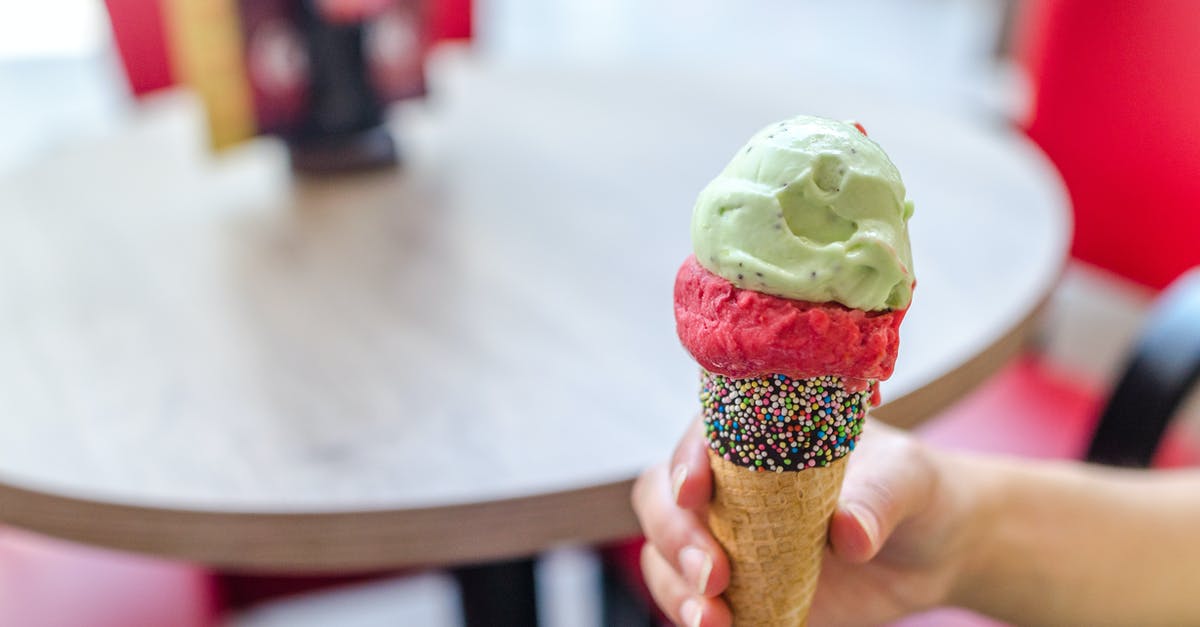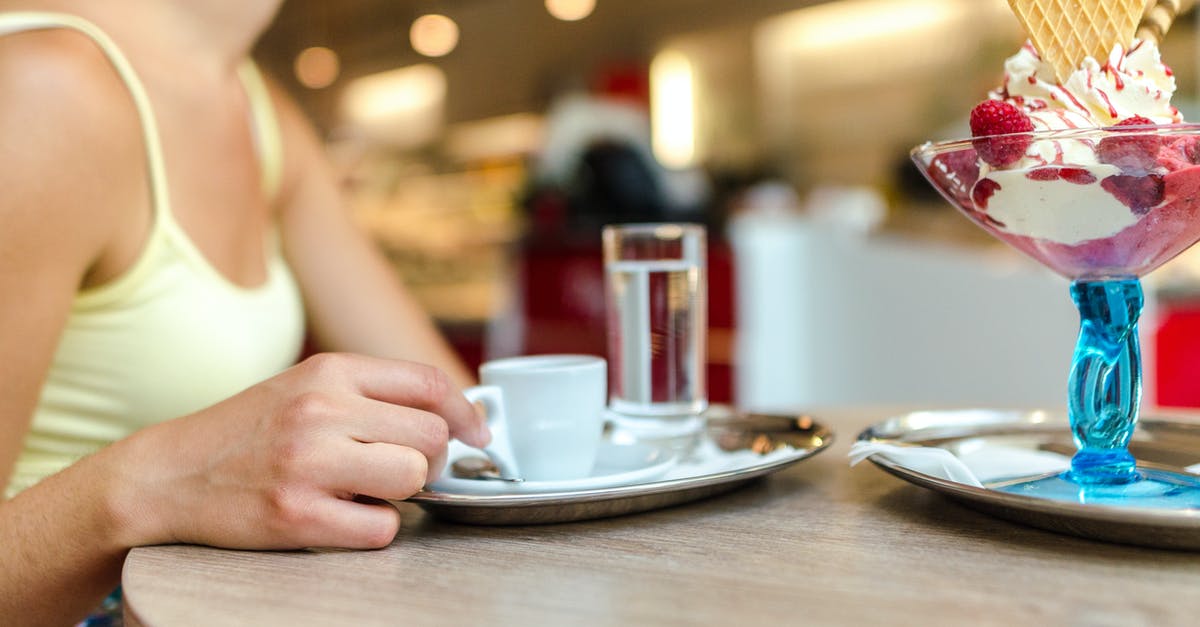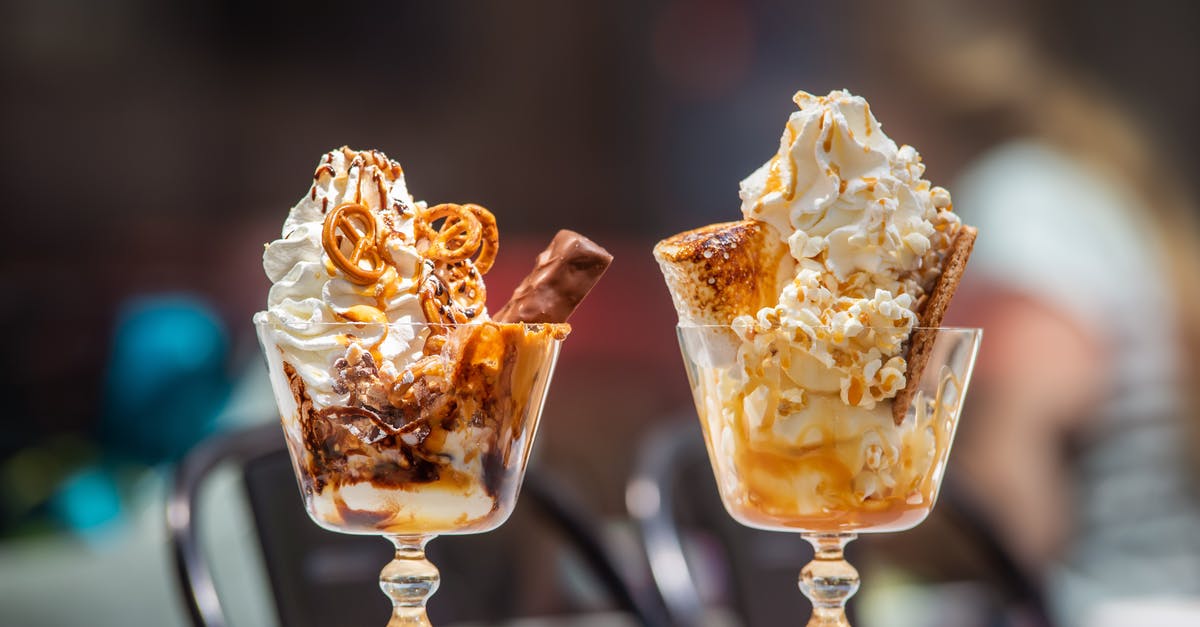Ice cream problems

I have a new ice cream machine, and I have been having some difficulties creating decent ice cream.
The latest recipe I have tried is: http://www.food.com/recipe/white-chocolate-raspberry-ripple-ice-cream-91447
Step 7 states:
Cook over medium heat until the custard coats the back of a wooden spoon, stirring constantly Remove the pan from the heat and stir in the white chocolate until melted and smooth.
Apparently this is supposed to take 20 minutes or so, but as soon as I put the mixture in the pot, it already coats the back of a spoon, leaving a clear mark, dripless. Should I still cook it for 20 minutes?
The ice cream turned out more like mousse instead of ice cream, perhaps I didn't beat it enough in the mixer?
The raspberry 'ripple' ended up freezing solid, and is just icy.
I tried a simple vanilla recipe the other day which didn't involve cooking the custard, and that worked quite nicely. However this recipe and another chocolate recipe which required cooking the custard turned out the same - was more like frozen mousse than icecream (completely different from the vanilla)
Any suggestions?
Best Answer
This one could just be the recipe's fault. I see now that it has you pour, basically, boiling milk onto eggs and sugar. That's pretty unusual; it could well result in you cooking some of the egg (bad!) before it's all incorporated. In your case, it sounds like it didn't quite go that far: you may have managed to cook the custard just right by accident. It's not helping you, though, and it might result in disasters eventually, especially with smaller ratio of egg to hot milk in another recipe. A more normal process would be:
- heat but don't boil at least some of the the milk and cream with the sugar
- stir some of the heated milk into the eggs to bring them partially up to temperature
- stir the warmed eggs and milk back into the rest of the milk
- continue heating and stirring until thickened (this might take some time, but not 20 minutes)
These steps, for example, are generally what David Lebovitz says to do in the recipes in The Perfect Scoop. He's a well-respected pastry chef who's also become a bit of an authority on ice cream; I've had success with every recipe I've tried from his book. As an example, this brown bread ice cream recipe from his blog follows those steps.
As for the texture of the final ice cream, that might be because of your eggs. Recipes are calibrated for large eggs; jumbo eggs are bigger, probably about 5/4 the size of large eggs, so 7 jumbo yolks might have been about 9 large yolks. The eggs are what give French-style ice cream its smooth, silky texture, so additional egg will accentuate that. I'd try it with 5 or 6 yolks (effectively 6.25 or 7.5).
It sounds like the texture you describe may have also lacked air, which could also be due to a few other common things. This could be due to insufficient egg-beating, but that's not the usual way to get light, fluffy ice cream, so I'd hesitate to blame it. Churning in the ice cream maker (this is not the same as the previous egg-beating) is normally the primary source of air. If you don't churn it long enough in the ice cream maker, it won't be as airy. Assuming you have the type of ice cream maker with the pre-frozen vessel, it's also important that the vessel be cold enough; if the custard doesn't freeze thoroughly in there, it won't be able to hold the air.
The ripple is a separate question. Generally, if you want something like that to stay soft when frozen, the way to do it is to load it up with sugar. The frozen raspberries I've seen aren't in syrup; if yours weren't either, you just didn't have nearly enough sugar. Otherwise, I'd again blame the recipe; you could probably fix it with more sugar. You could also try keeping it in a warmer place (the door) in your freezer. As some related reading, Lebovitz has a great blog post on making ice cream softer - note that sugar content is one of the methods. He also mentions use of stabilizers and anti-crystallization agents in ice cream; the same kinds of things are used in commercial versions of things like this ripple.
So, be wary of online recipes; they're not always the best, and sometimes they're not even well-tested, especially with something like ice cream that most people don't make. And once you get the basics down (e.g. learn the process from someone very trustworthy like Lebovitz), you can take a recipe online, keep the ingredient list, and prepare it the way you know works, ignoring some of the listed steps.
Pictures about "Ice cream problems"



Quick Answer about "Ice cream problems"
Ice cream is also high in sugar, which makes up the majority of its carbohydrate content. The Mayo Clinic website warns that consumption of too much sugar may contribute to health problems such as weight gain, cavities and increased levels of blood triglycerides, another unhealthy type of fat.Why ice cream is not good for health?
Ice cream is unhealthy because it is an energy dense food and has a high content of carbohydrates, sugar, and fat. With a carbohydrate count at about 15 grams in a one-half-cup serving, 20-30 grams of sugar depending on the flavour and 10-20 grams of fat.What are the cons of ice cream?
Ice cream has several downsides. It's low in nutrients, high in added sugar and calories, and may contain artificial ingredients.Why is my ice cream not freezing in my ice cream maker?
It's as simple as this: If the freezer bowl that goes with your ice cream maker isn't cold (like, really cold), your ice cream is never going to freeze. \u2192 Follow this tip: In order for the machine to freeze the ice cream as it churns, it needs to be cold \u2014 like, totally and completely, rock-hard, ice cold.What ice cream does to the body?
\u201cIce cream stimulates the thrombotonin, which is a hormone of happiness and helps in reducing the levels of stress in the body. Ice cream is made of milk, which contains L-triptophane, which is a natural tranquilizer and helps in relaxing the nervous system.The REAL Reason McDonalds Ice Cream Machines Are Always Broken
More answers regarding ice cream problems
Answer 2
Use an instant read thermometer to check the temperature of your custard. It should be around 170°F / 76°C. The whole "coat the back of a spoon" thing is a little tricky since the thickness of the custard will depend on the ratio of milk vs cream, the amount of egg yolks, the size of the egg yolks etc. Of course, if you never change your recipe and always use the same size eggs you can learn what the custard should feel like. But if you are like me and use different recipes and buy different eggs a thermometer is much more reliable.
(There are much cheaper options available than the one I linked to, but that is the one I use and I highly recommend it.)
Answer 3
Another thing which I don't think anyone has touched on: especially with the pre-chilled container type of ice cream maker (as opposed to the $300+ ones with compressors), it is important that the liquid you put into them is cold. Not frozen, but as close as possible. Room temperature is too warm—at least refrigerate it.
If you want to really get it cold, you can freeze part of the custard (an eighth of it or so), refrigerate the rest, then mix the frozen part back in. Keep stirring until it melts; at that point your custard will be right at freezing.
Sources: Stack Exchange - This article follows the attribution requirements of Stack Exchange and is licensed under CC BY-SA 3.0.
Images: Lukas, Lukas, Piotr Arnoldes, Jill Wellington
